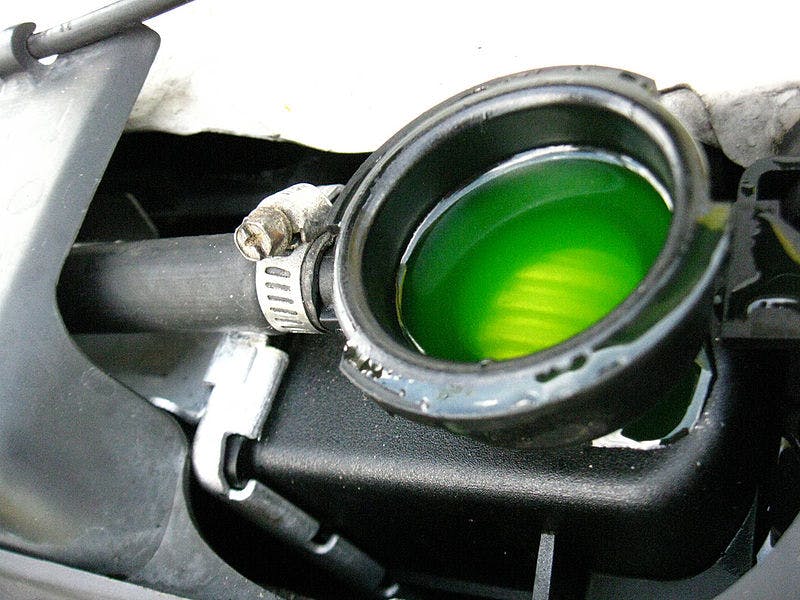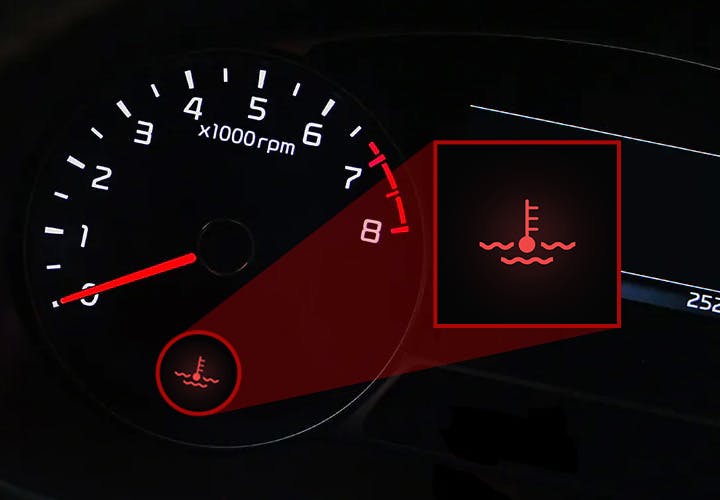Engine Cooling System: How it works, and its types

The task of the engine cooling system is to remove the excess heat generated during the combustion process and transfer it to the individual parts of the engine and into the engine oil.
Engine cooling is, therefore, a critical aspect of maintaining optimal engine performance and extending its lifespan. It protects the engine and components from overheating and ensures a stable engine operating temperature.
Indholdsfortegnelse
How an Engine Cooling System Works
The engine transfers heat to the coolant, which absorbs and carries it away.
The water pump circulates the coolant throughout the cooling system.
The thermostat regulates the flow of coolant between the engine and the radiator, ensuring that the engine reaches and maintains its optimal operating temperature.
The radiator dissipates the heat absorbed by the coolant, allowing it to cool down before returning to the engine.
Cooling fans increase the airflow through the radiator, especially when the vehicle is stationary or moving slowly, helping to maintain the engine's optimal temperature.
Types of Engine Cooling Systems
Two primary types of internal combustion engine cooling systems are air-cooled and liquid-cooled.
1. Air-Cooled Systems
Air-cooled engines rely on the flow of air over the engine's surfaces to dissipate heat. This is facilitated through the use of cooling fins that increase the surface area of the engine components and promote heat transfer.
Advantages of Air-Cooled Systems
Simplicity: Air-cooled systems are less complex than liquid-cooled systems, with fewer parts to maintain and replace.
Lightweight: Without the need for a radiator, coolant, or other liquid-cooling components, air-cooled engines are typically lighter than their liquid-cooled counterparts.
Disadvantages of Air-Cooled Systems
Inefficiency: Air-cooled systems are generally less efficient at cooling, as they rely on ambient air temperature and airflow for heat dissipation.
Noise: The cooling fins used in air-cooled engines can generate additional noise during operation.
2. Liquid-Cooled Systems

Liquid-cooled engines use a fluid, typically a mixture of water and antifreeze, to absorb and transfer heat away from the engine components.

Coolant Liquid: What do the different colors mean?
The coolant circulates through channels within the engine block and cylinder head before passing through a radiator, where it releases heat into the surrounding air.
Advantages of Liquid-Cooled Systems
Efficiency: Liquid-cooled systems offer more efficient heat transfer than air-cooled systems, allowing for better temperature control and engine performance.
Consistency: Using a coolant ensures uniform temperature distribution across the engine, reducing the risk of hot spots and potential damage.
Disadvantages of Liquid-Cooled Systems
Complexity: Liquid-cooled systems have more components, such as a radiator, water pump, and coolant hose, making them more complex and potentially prone to failure.
Weight: The additional components and coolant add weight to the engine and vehicle.
Main Components of an Engine Cooling System
The main components of an engine cooling system include:
Radiator
Water Pump
Thermostat
Coolant
Cooling Fans
Hoses and Pipes
1. Radiator
The radiator is responsible for cooling the engine coolant by dissipating heat as it passes through a series of tubes and fins. It is typically located at the front of the vehicle to maximize airflow.
2. Water Pump
The water pump is a mechanical device that circulates coolant throughout the engine and cooling system. The engine drives it via a belt or a chain.
3. Thermostat
The thermostat is a temperature-sensitive valve that controls the flow of coolant between the engine and the radiator. It ensures the engine warms up quickly and maintains a consistent operating temperature.
4. Coolant
Coolant is a mixture of water and antifreeze that absorbs heat from the engine and transfers it to the radiator. The antifreeze component prevents the coolant from freezing in cold temperatures and raises the boiling point to prevent overheating.

Red Engine Coolant Light: Stop your car now! 🚨
5. Cooling Fans
Cooling fans help to increase airflow through the radiator, especially when the vehicle is stationary or moving slowly. Fans can be mechanically driven or electric, with the latter being controlled by the engine's temperature sensor.
6. Hoses and Pipes
Hoses and pipes are responsible for carrying coolant between the engine, radiator, and other cooling system components. They must be made from durable materials to withstand high temperatures and pressures.

Blue Engine Coolant Light: What does it mean? 🥶
Cooling System Maintenance and Best Practices
Proper maintenance of an engine's cooling system ensures optimal performance and prevents costly repairs. Here are some best practices to follow:
Regularly Check and Top Off Coolant: Inspect the coolant level in the reservoir at regular intervals and top it off as needed.
Flush and Replace Coolant Periodically: Coolant can become contaminated over time and lose effectiveness. Follow the manufacturer's recommendations for flushing and replacing the coolant.
Inspect Cooling System Components: Regularly examine the water pump, thermostat, radiator, cooling fan, and hoses for signs of wear, damage, or leaks. Replace or repair components as needed.
Clean the Radiator: Ensure the radiator fins are clean and free from debris, which can obstruct airflow and reduce the cooling efficiency.
Monitor Engine Temperature: Keep an eye on the engine temperature gauge or warning light while driving. If the engine begins to overheat, address the issue immediately to prevent damage.
Use the Correct Coolant Mixture: Always use the appropriate coolant mixture recommended by the manufacturer. Using the wrong type can lead to decreased cooling efficiency or damage to the system.
Conclusion
We believe that after this article, you will know how important cooling is for the engine and its components. Whether using an air-cooled or liquid-cooled system, effective engine cooling is vital to the longevity and performance of any internal combustion engine.